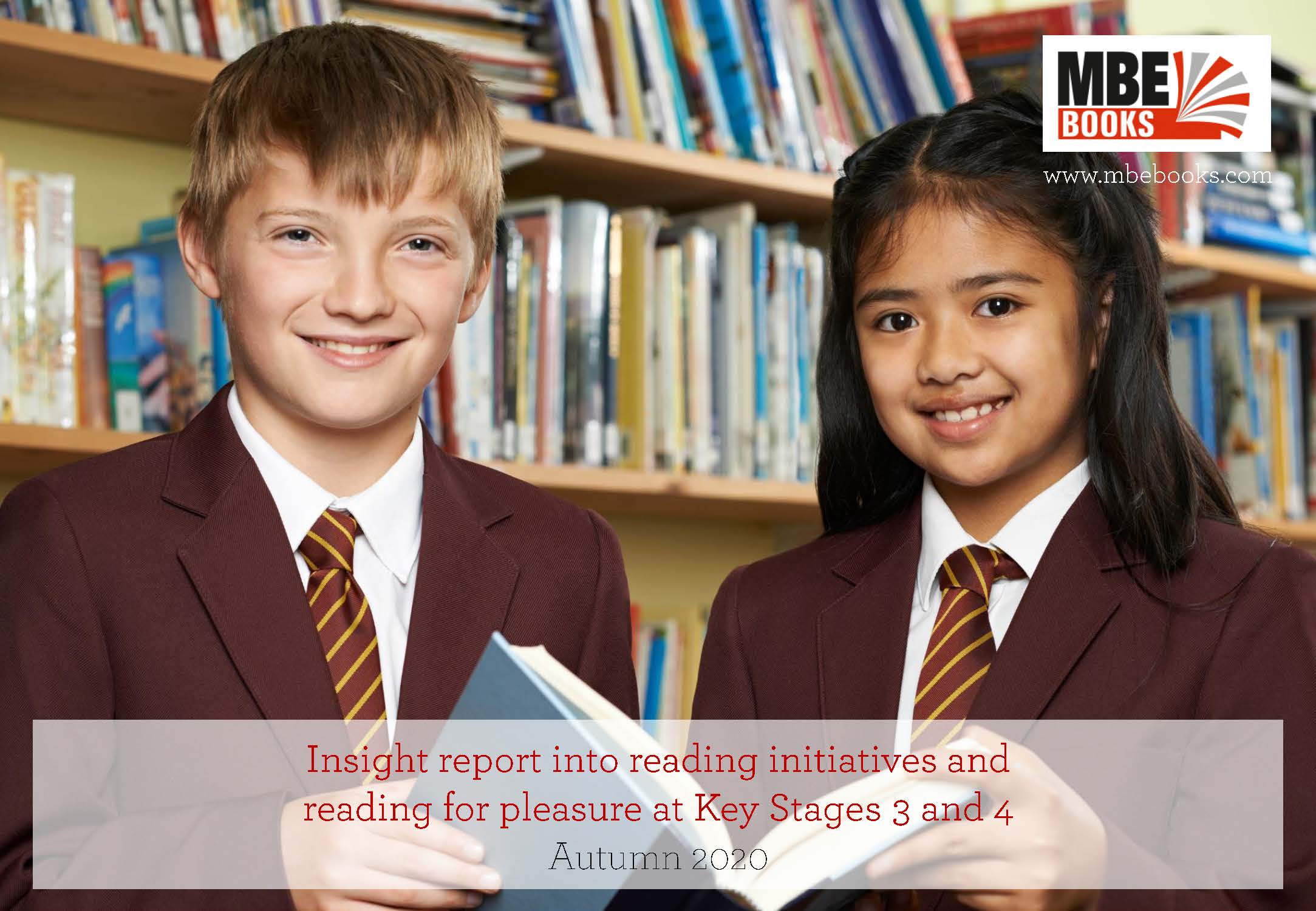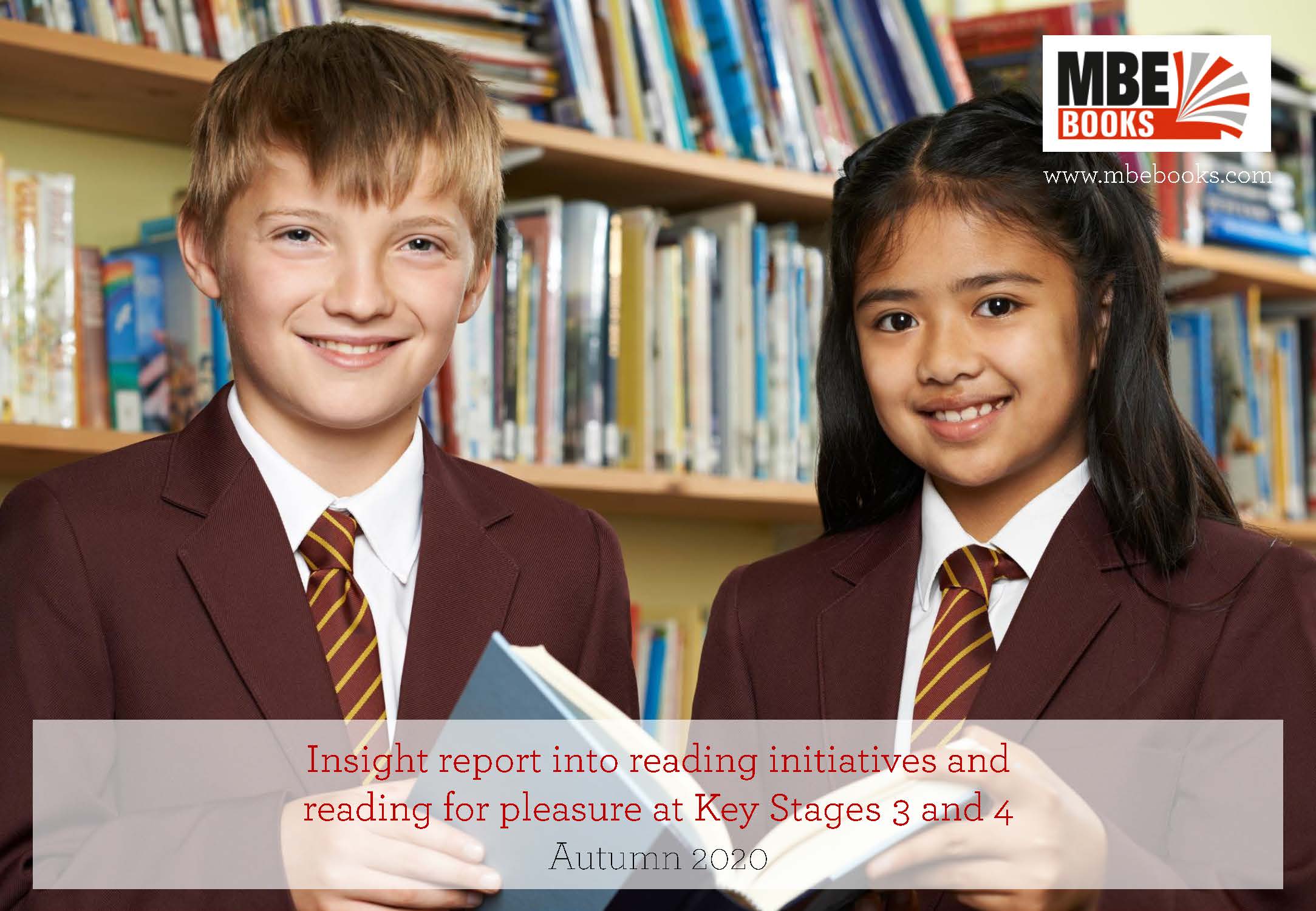 At MBE Books we have supplied books to thousands of schools for over 30 years, offering the most popular English set texts and latest titles spanning Key Stage 2, Key Stage 3, GCSE and A-Level set texts, and we are proud of our service.
At MBE Books we have supplied books to thousands of schools for over 30 years, offering the most popular English set texts and latest titles spanning Key Stage 2, Key Stage 3, GCSE and A-Level set texts, and we are proud of our service.
What we wanted to do – and this is a first for MBE Books – is to reach out to our community of school improvement leads, literacy co-ordinators, subject leaders, English teachers and librarians to learn more about their approaches to the teaching of reading with 11-15 year olds, and collate and share these within our community and with other schools more widely.
We are therefore delighted to launch MBE Books’ insight report into reading initiatives and reading for pleasure at Key Stages 3 and 4. Thank you to each and every one of the 320 people who completed our survey up to and including the end of the summer term in July 2020, which has ultimately informed our report. You can download the report here.
The headline findings are:
- 60% of respondents say they are very concerned or concerned about the reading ability of students in Year 7.
- Most schools (36%) allocate 10-15 minutes to reading for pleasure in school every day – but, for those who do not encourage this, over two thirds (64%) say this is because there is not enough time.
- To address some of these issues 59% of respondents undertake Tutor Time Reading most days and 55% use Accelerated Reader within their school. Paired reading, reading buddies and Drop Everything And Read are other common reading initiatives.
- The most popular books that schools read with Year 7 students are: 1. The Boy in the Striped Pyjamas, 2. Private Peaceful, 3 (=). A Monster Calls, and Holes.
- Schools’ favourite books to teach Key Stage 3 students are: 1. Of Mice and Men, 2. Animal Farm and 3. Private Peaceful.
- To grab the attention of reluctant readers at Key Stages 3 and 4, schools mostly recommend 1. Harry Potter, 2 A Monster Calls and 3 (=). Of Mice and Men, and Noughts and Crosses.
- Reciprocal reading, close reading, modelled reading, decoding and vocabulary, and discussion are schools’ preferred teaching strategies for helping students understand the text.
When considering some of the report findings myself I think it is particularly interesting to see:
- Within the ‘Top 10’ book lists we provide – but also the wider data that we have available – that these lists bring a genuine combination of the ‘classics’ and newer titles.
- There are some clear themes emerging: for example, that a significant number of books on these school-derived lists include war-based and fantasy genres, and increasingly diversity and inclusion titles as well.
- And finally the importance of graphic novels (as a genre) to engage reluctant readers.
I hope readers will find our insight report both informative and packed full of ideas on shared practice. We plan to repeat this in the 2020-21 academic year, but in the meantime remain available to help schools in any way we can.
Jeremy Stallman is Managing Director at MBE Books

